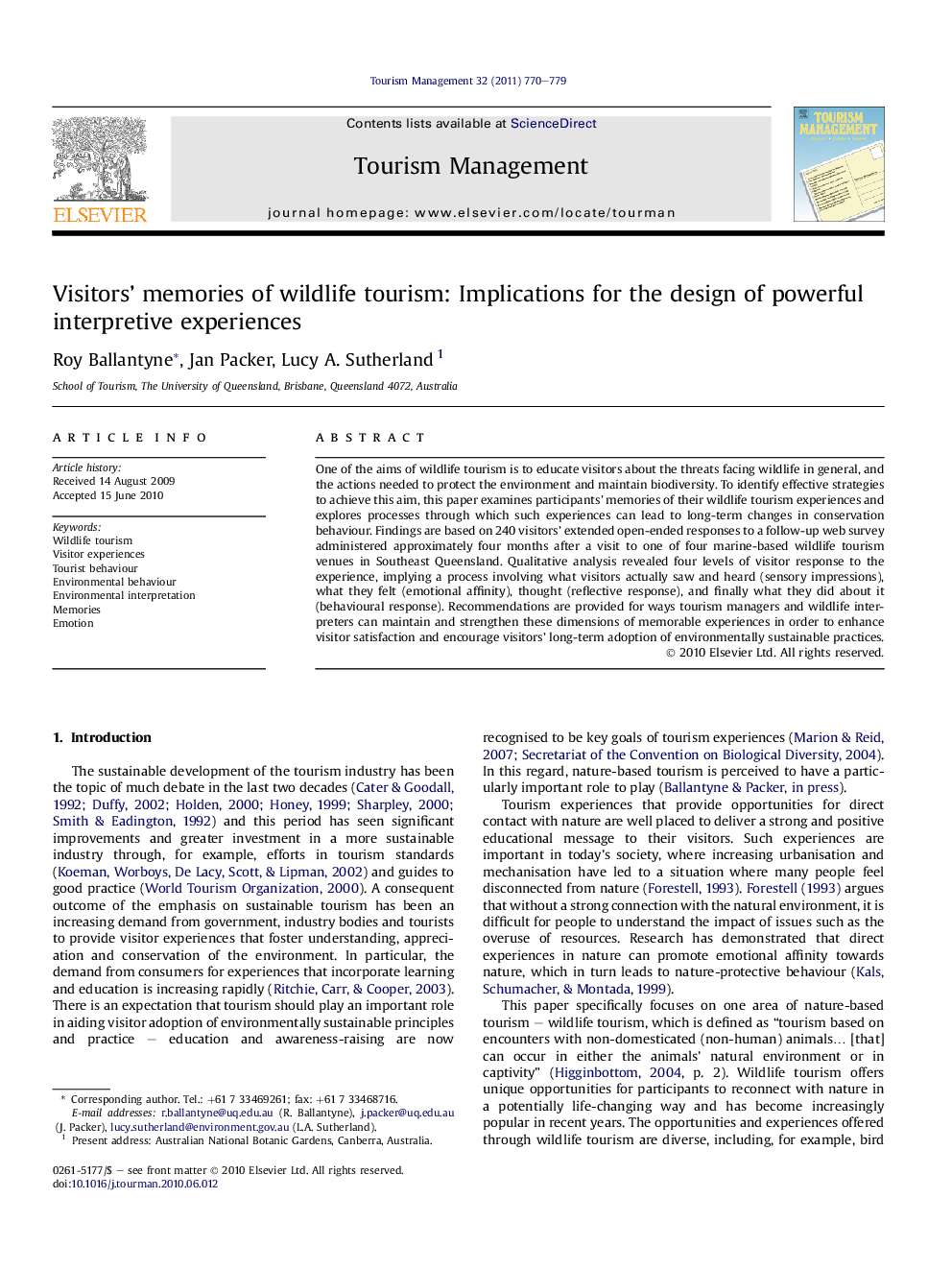| Article ID | Journal | Published Year | Pages | File Type |
|---|---|---|---|---|
| 1012242 | Tourism Management | 2011 | 10 Pages |
One of the aims of wildlife tourism is to educate visitors about the threats facing wildlife in general, and the actions needed to protect the environment and maintain biodiversity. To identify effective strategies to achieve this aim, this paper examines participants’ memories of their wildlife tourism experiences and explores processes through which such experiences can lead to long-term changes in conservation behaviour. Findings are based on 240 visitors’ extended open-ended responses to a follow-up web survey administered approximately four months after a visit to one of four marine-based wildlife tourism venues in Southeast Queensland. Qualitative analysis revealed four levels of visitor response to the experience, implying a process involving what visitors actually saw and heard (sensory impressions), what they felt (emotional affinity), thought (reflective response), and finally what they did about it (behavioural response). Recommendations are provided for ways tourism managers and wildlife interpreters can maintain and strengthen these dimensions of memorable experiences in order to enhance visitor satisfaction and encourage visitors’ long-term adoption of environmentally sustainable practices.
